
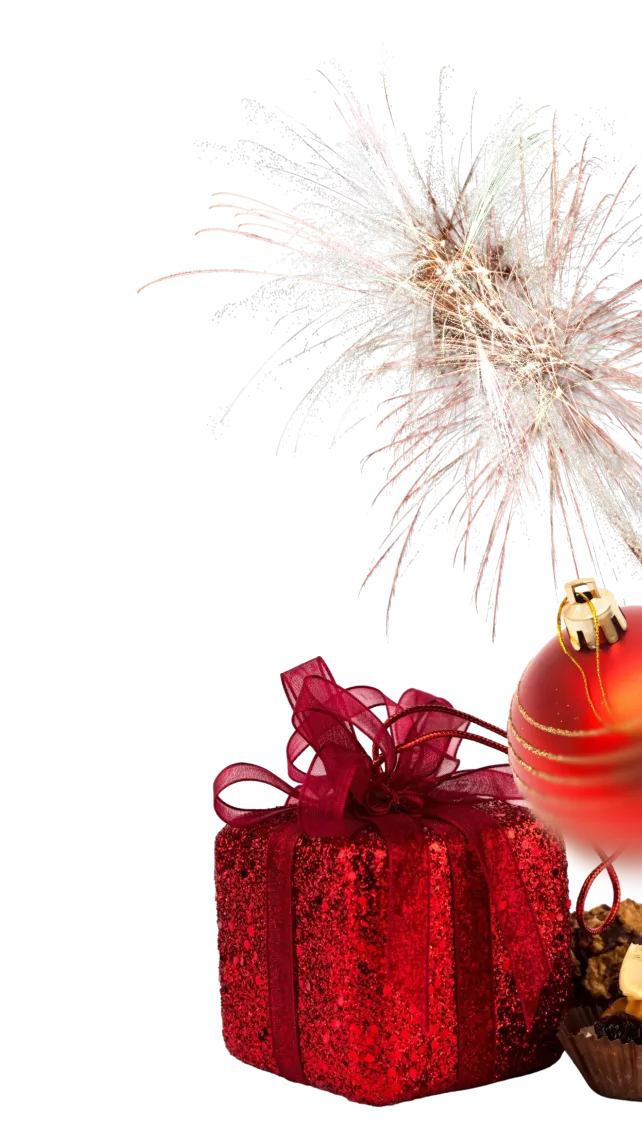
December Trading
Deals Are Live!
Save on Global+, data access,
and add-ons.
See All December Deals
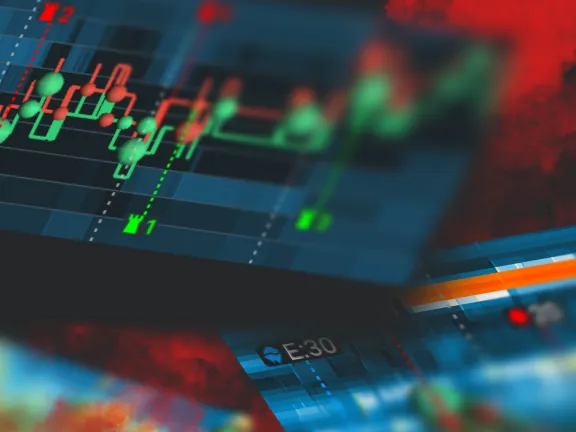
Black Friday
Nov 28-Dec 31
24 days : 12 hours
50% OFF Global+ Quarterly
+ 50% OFF Data (3 months)

Cyber Monday
Dec 1 - Dec 31
24 days : 12 hours
60% OFF Global+ Monthly
+ Data (1 month)
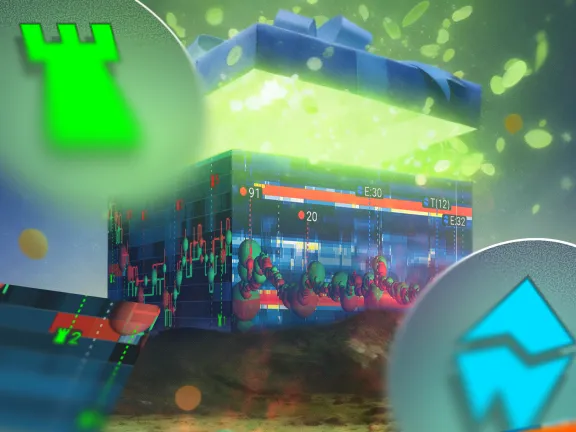
Add-on Deals
Dec 1 - Dec 31
24 days : 12 hours
50% OFF
Add-ons

New Year Sale
Dec 26 - Jan 1
18 days : 12 hours
30% OFF Global+ Lifetime
*Data not included
Futures
January 27, 2025
SHARE
Trading Stock Futures During Macro Events: What Traders Need to Watch in 2025
Have you ever tried to trade during a big economic announcement? It is more about dealing with a storm in the stock market. Here, you better know the winds! That’s because they are the difference between getting swept away and riding the wave. Macro events, like inflation reports, employment data, or central bank decisions, create massive swings in the markets. In 2025, these events will be even more significant.
Want to prepare and react smartly? In this article, we will learn about macro events and how they affect stock futures. We will explore strategies for trading them strategically. You’ll learn how to analyze economic indicators such as CPI, NFP, and rate decisions. Also, you will see how these reports cause volatility in the markets.
We’ll also look at tools like order flow analysis to help you spot opportunities before they hit the market. At the same time, you will understand how to avoid the risks of false breakouts or overleveraging. Let’s begin.
What Are Macro Events?
Macro events are significant economic, political, or social developments. Usually, they have widespread impacts on markets or economies as a whole. Mostly, they do not target specific companies or sectors. Due to this wholesomeness, they influence the sentiment and behavior of market participants. Check the graphic below to learn about various such events:

Be aware that these factors create ripples across global markets. As a result, they affect:
- Investor confidence
and
- Market direction.
Moreover, some macro events are closely tied to trading stock futures, particularly futures based on major indices like the S&P 500 or Nasdaq. Study the two examples below:
| Traders often rely on CPI futures trading to gauge inflation trends and their impact on interest rates. | Similarly, NFP stock futures are used for trading on labor market data. Employment figures often indicate economic health. |
It is worth mentioning that the volatility caused by macro events offers lucrative opportunities for traders. This is especially helpful for those who try to capitalize on short-term price swings.
Example:
- Say there are some macro events in 2025, such as anticipated central bank decisions or major geopolitical shifts.
- These cause traders to see heightened market activity and price fluctuations.
- By doing so, they even create ideal conditions for futures trading.
- At such moments, traders must stay informed about upcoming macroeconomic developments.
- By doing so, they can position themselves and profit from these events.
Why Macro Events Impact Stock Futures?
Most macro events deeply impact trading stock futures. That’s because they provide several critical insights. Check the graphic below to learn about them:
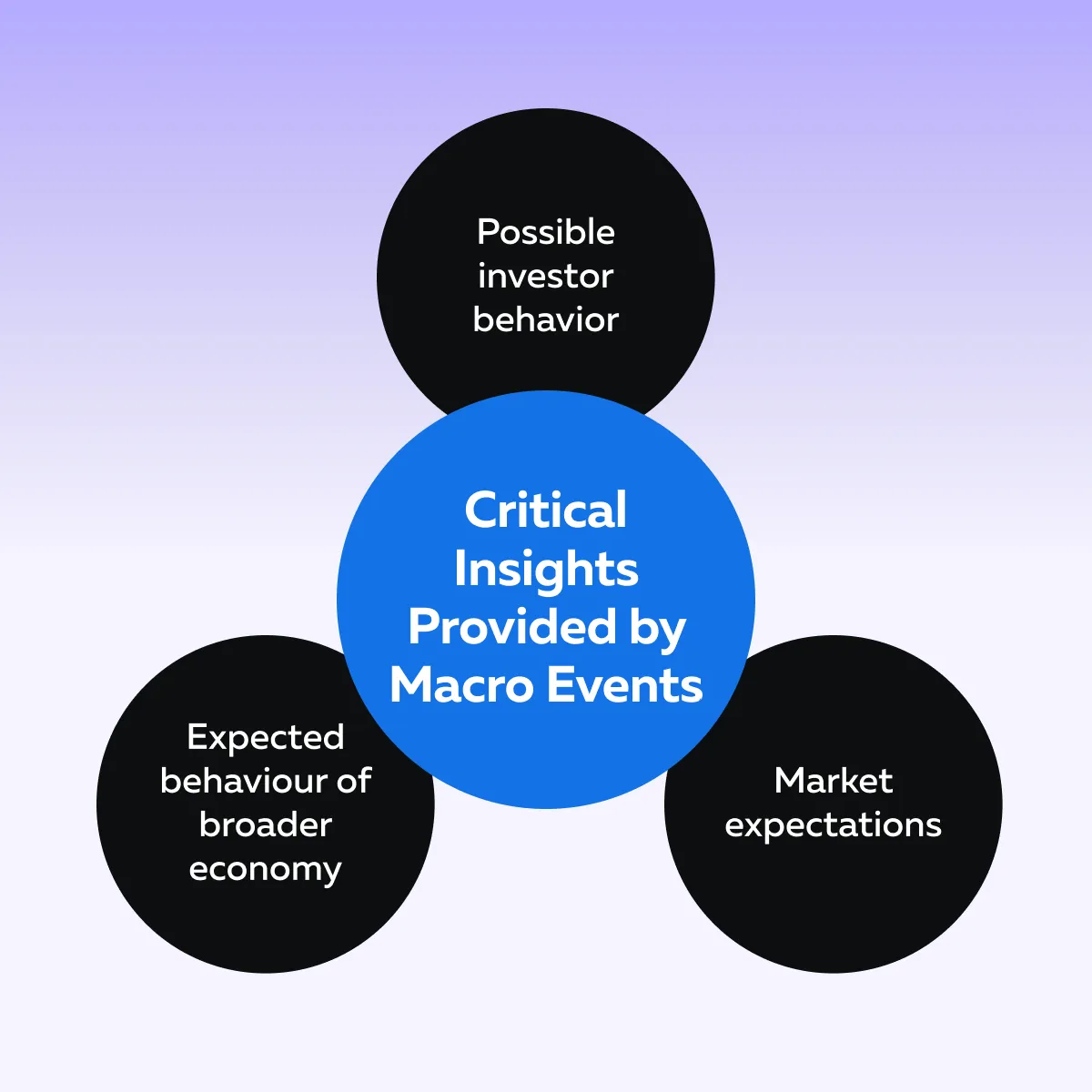
These insights are provided by certain key macroeconomic indicators, such as the following:
- CPI (Consumer Price Index),
- NFP (Non-Farm Payrolls), and
- Rate decisions by central banks.
These factors directly shape the performance of stock index futures tied to benchmarks like the S&P 500, Dow, or Nasdaq. Let’s gain more clarity and see how:
-
- CPI (Consumer Price Index):
- The CPI measures inflation.
- It tracks changes in the prices of goods and services.
- Inflation data heavily influences interest rate expectations.
- That’s because central banks often tighten monetary policy to combat rising prices.
- CPI (Consumer Price Index):
- Example:
-
-
-
- CPI futures trading becomes important when inflation comes in higher than anticipated.
- Such a scenario causes stock futures to decline.
- This happens because traders prepare for higher interest rates that could slow economic growth.
-
- NFP (Non-Farm Payrolls):
- NFP data is a key employment indicator.
- It signals the health of the labor market and the overall economy.
- When the NFP report shows strong job growth, it boosts confidence in the economy.
- It pushes NFP stock futures higher.
- On the other hand, weaker-than-expected employment figures lead to sell-offs.
- This happens because market sentiment turns bearish.
-
- Rate Decisions:
- Central bank decisions (such as those made during FOMC meetings) directly impact interest rates.
- As a result, futures linked to significant indices experience sharp movements following these announcements.
- For example:
- Say the Federal Reserve signals rate hikes.
- Now, futures tied to the S&P 500 or Dow might decline.
- This is due to fears of reduced corporate earnings.
Monitor stock futures order flow and liquidity during CPI and rate decisions using Bookmap.
The Trader’s Reaction
Macro indicators like those mentioned above create market-wide volatility. In response, traders rapidly adjust their positions based on the new data.
Example:
- Say a CPI report has been released.
- It reveals unexpected inflationary pressure.
- In such situations, trading stock futures become more dynamic.
- There are sharp sell-offs that show expectations of tighter monetary policy.
By understanding these relationships, traders can anticipate market movements. This helps them to better capitalize on the price swings caused by macroeconomic data releases.
Trading Strategies for Macro Events in 2025
Macro events in 2025 will present unique opportunities and challenges for traders operating in the stock futures markets. As discussed above, key events like CPI futures trading and NFP stock futures releases will increase volatility. At these times, you must follow specific proven trading strategies. Let’s check them out:
Pre-Event Positioning
Pre-event positioning is an essential strategy while trading stock futures. In it, you:
- Analyze market expectations
and
You make this analysis for days or hours leading up to a significant macroeconomic event. This proactive approach allows you to predict price movements based on available forecasts. Let’s see how you can make intelligent predictions:
| Economic Forecasts | Monitoring Order Flow |
|
|
For more clarity, let’s see an example in action:
- Say an upcoming CPI report is expected to show higher-than-usual inflation.
- Now, traders might short Nasdaq futures.
- They do so as they are anticipating that tech stocks (which are sensitive to interest rate hikes) will face selling pressure.
Trading the Initial Reaction
Trading the initial reaction to macro events is a high-stakes strategy. It requires quick decision-making and precise execution. You can consider the following techniques to better deal with market volatility:
| Using Stop Orders for Breakouts | Monitoring Liquidity Vacuums |
|
|
For more clarity, let’s see an example in action:
- Say the NFP data reveals much stronger-than-expected job growth.
- A trader quickly goes long on Dow futures.
- By doing so, they try to benefit from the:
- Positive market sentiment
and
- A rally in response to the economic strength.
- Similarly, assume that CPI data shows unexpectedly low inflation.
- Now, traders might buy Nasdaq futures and bet on a favorable environment for growth stocks.
Post-Event Trends
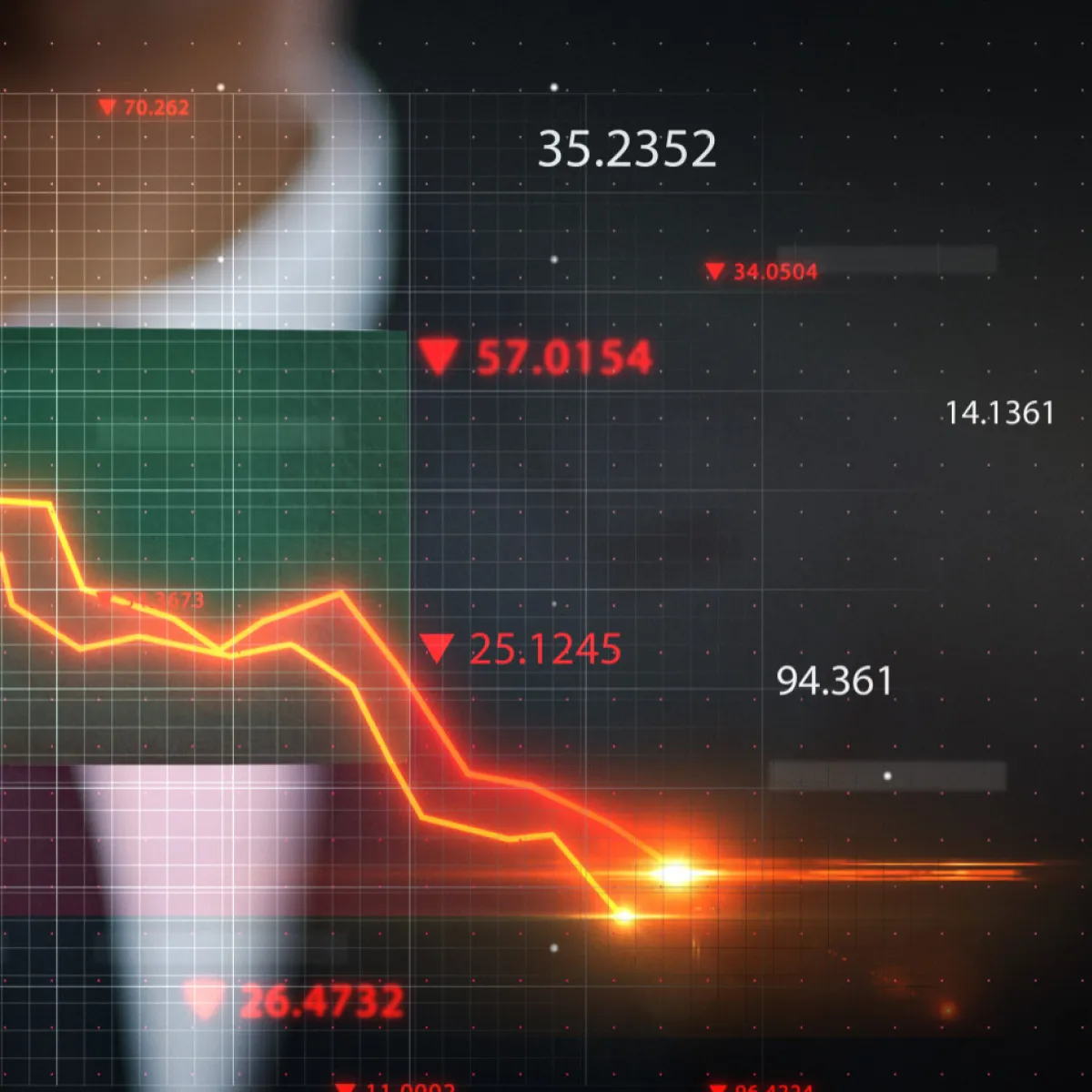
It has been observed that usually when the initial volatility of a macro event subsides, traders shift their focus to identifying and trading sustained trends. Please note that these trends develop because markets digest the implications of key macroeconomic data or announcements. This makes this phase crucial for trading stock futures. Let’s see how you can execute this trading strategy:
| Trend Confirmation with Volume Analysis | Order Flow Analysis |
|
|
For more clarity, let’s see an example in action:
- Say there was a hawkish Fed decision.
- In response, markets initially react with sharp volatility.
- Once the immediate reaction stabilizes, stock futures establish a clear downtrend.
- Now, traders adjust to expectations of higher interest rates.
- They capitalize on this by shorting Nasdaq futures or other tech-heavy indices.
- They mainly focus on indices that underperform in high-rate environments.
Risks of Trading Stock Futures During Macro Events
Trading stock futures around macro events comes with significant risks. Macro events often trigger high volatility. They create an unpredictable environment for even the most experienced traders. Let’s see what risks you might face:
| Particulars | Risk I: Increased Volatility | Risk II: False Breakouts | Risk III: Overleveraging Risks |
| Meaning |
|
|
|
| Example |
|
|
|
For more clarity, let’s see an example in action:
- Say a trader is heavily leveraged on Nasdaq futures ahead of a CPI futures trading report.
- Assume that inflation data surprises the upside.
- This leads to fears of tighter monetary policy.
- The futures sell off rapidly.
- In such a situation, without proper risk management, the trader could:
- Face margin calls
or
- Liquidation.
To manage these risks, traders must adopt disciplined strategies. See the graphic below to learn about some popular steps you can take:

Trade smarter during high-impact macro events with Bookmap’s advanced analytics for stock futures.
Top Macro Events to Watch in 2025
The year 2025 is expected to bring several key macro events. They will significantly impact trading stock futures. Here, traders should closely monitor these events. This will help them to:
- Anticipate market movements
and
- Identify future trading opportunities.
Below are some of the top events likely to drive volatility:
- Quarterly GDP Reports:
- GDP reports provide critical insights into the economy’s growth trends.
- Strong GDP growth signals economic resilience.
- It can drive bullish momentum in stock futures tied to major indices like the S&P 500 or Dow.
- Conversely, weaker-than-expected GDP can weigh on market sentiment.
- Employment Data Releases:
- Employment figures (NFP (Non-Farm Payrolls) and weekly jobless claims) are vital indicators of economic health.
- Usually, a robust NFP report pushes NFP stock futures higher.
- That’s because it signals strong labor market performance.
- Conversely, disappointing data triggers a sell-off.
- Inflation Metrics:
- Monthly releases of the CPI (Consumer Price Index) and Producer Price Index (PPI) can be used to gauge inflationary pressures.
- These metrics heavily influence CPI futures trading.
- That’s because traders assess the likelihood of central bank intervention to manage inflation.
- Higher-than-expected CPI numbers can create bearish trends in futures due to fears of rate hikes.
- FOMC Meetings:
- Federal Reserve meetings are among the most impactful events for rate decisions trading.
- Please note that the Fed’s interest rate announcements and forward guidance lead to significant price moves in stock futures.
- This especially happens if policy decisions deviate from market expectations.
- Generally, a hawkish tone drives a sell-off in Nasdaq futures, while a dovish stance could lift them.
Let’s study an example in action to understand better:
- Suppose a mid-year GDP report for 2025 exceeds expectations.
- It signals strong economic growth.
- Now, this positive data could create bullish momentum in S&P 500 futures.
- That’s because most traders interpret it as a sign of sustained corporate earnings.
- Similarly, a dovish stance at an FOMC meeting might spur rallies in tech-heavy indices like the Nasdaq.
Conclusion
To profitably trade stock futures, you must track and understand macro events in 2025, such as CPI futures trading, NFP stock futures releases, and rate decisions trading. These are not just data points. You can think of them as catalysts that drive market volatility and influence long-term trends. These events allow you to profit from significant price movements. However, please note that they also bring risks like slippage, false breakouts, and amplified losses due to leverage.
Therefore, preparation is the key. To trade better, you can start using our advanced market analysis tool, Bookmap. With it, you can monitor order flow, analyze market activity in real time, identify liquidity levels, spot institutional activity, and recognize potential breakouts.
While the risks of macro events cannot be eliminated, strategic planning and the use of the Bookmap tool can minimize them. Gain an edge during macroeconomic events with Bookmap’s real-time futures trading tools.
